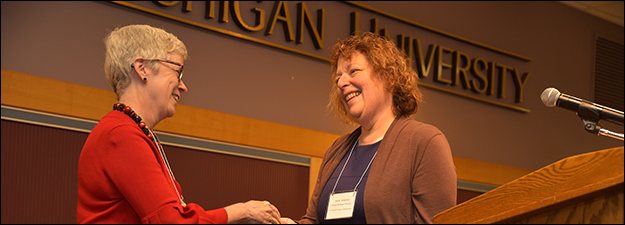Wolves Outside, Inside, and at the Medieval Door
Sponsoring Organization(s)
Special Session
Organizer Name
Laura D. Gelfand
Organizer Affiliation
Utah State Univ.
Presider Name
Kathleen Ashley
Presider Affiliation
Univ. of Southern Maine
Paper Title 1
Hagiography and Historical Encounters with Canis Lupus Lupus
Presenter 1 Name
Laura D. Gelfand
Paper Title 2
Saint Norbert and the Wolves of Prémontré
Presenter 2 Name
Ellen M. Shortell
Presenter 2 Affiliation
Massachusetts College of Art and Design
Paper Title 3
Wolf versus Lion: The Princely Avatars of Orleans and Burgundy
Presenter 3 Name
Elizabeth J. Moodey
Presenter 3 Affiliation
Vanderbilt Univ.
Start Date
11-5-2017 7:30 PM
Session Location
Bernhard Brown & Gold Room
Description
Wolves were a common presence in the medieval landscape: restricted to liminal spaces, they inhabited the borderlands between town and country. The stuff of nightmares, wolves were considered vicious and ruthless. Systematic eradication of wolves across Europe began in the Early Middle Ages, and these efforts were so effective that wolves were either completely extinct, or very rare, in England by around 1500. While they were somewhat more common on the Continent, institutional demonization of wolves was widespread and it is within this context that the papers in this session will consider the embedded, symbolic, and polyvalent meaning found in later medieval and Early Modern representations of human/wolf encounters.
Laura D. Gelfand
Wolves Outside, Inside, and at the Medieval Door
Bernhard Brown & Gold Room
Wolves were a common presence in the medieval landscape: restricted to liminal spaces, they inhabited the borderlands between town and country. The stuff of nightmares, wolves were considered vicious and ruthless. Systematic eradication of wolves across Europe began in the Early Middle Ages, and these efforts were so effective that wolves were either completely extinct, or very rare, in England by around 1500. While they were somewhat more common on the Continent, institutional demonization of wolves was widespread and it is within this context that the papers in this session will consider the embedded, symbolic, and polyvalent meaning found in later medieval and Early Modern representations of human/wolf encounters.
Laura D. Gelfand


